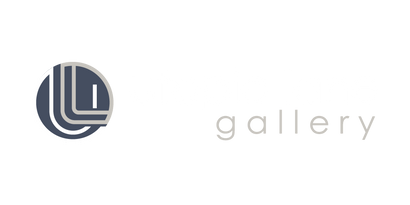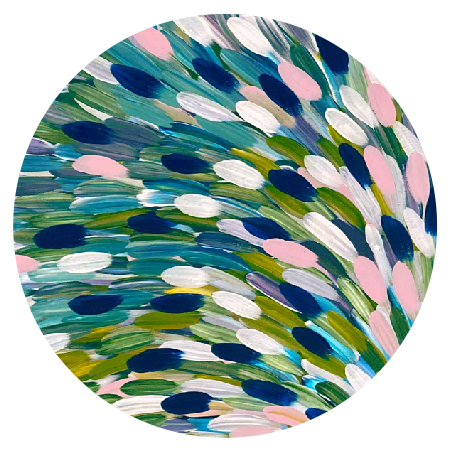Paintings
Exhibitions
Subscribe to receive your exclusive preview of exhibitions prior to opening.
You will be able to view and purchase exhibition artworks before they go live.
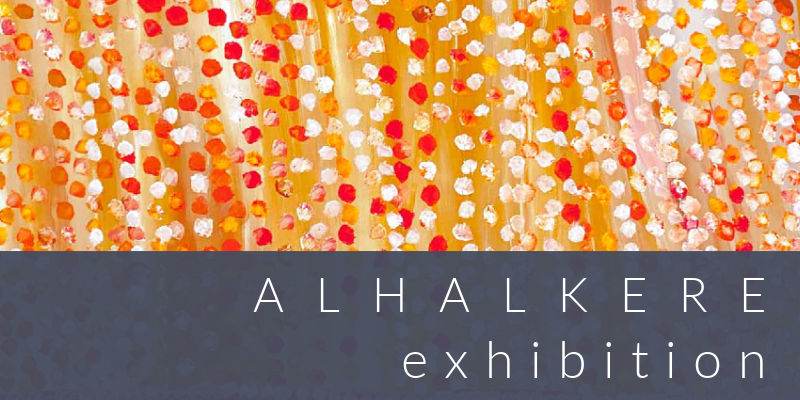
Past Exhibitions
Subscribe to receive your exclusive preview of exhibitions prior to opening.
You will be able to view and purchase exhibition artworks before they go live.
Subscribe
Collections
Artists
About the Artists
Our vibrant and dynamic artists are from the Utopia region; a large remote area of Central Australia which, until recently, had no government funded art centre. As a result of their pioneering efforts, they have one of the strongest and richest art histories.

Explore More Artist Bio's >
About the Artists
Our vibrant and dynamic artists are from the Utopia region; a large remote area of Central Australia which, until recently, had no government funded art centre. As a result of their pioneering efforts, they have one of the strongest and richest art histories.
6 Facts About Aboriginal Art History
January 27, 2016 4 min read
1. Aboriginal art belongs to one of the oldest living populations in the world
DNA has confirmed that Aboriginal Australians are one of the oldest living populations in the world and their ancestors had split from the first modern human populations to leave Africa between 64,000 to 75,000 years ago.
"Australians are truly one of the world's great human populations and a very ancient one at that, with deep connections to the Australian continent and broader Asian region. About this now there can be no dispute." - evolutionary biologist Professor Darren Curnoe of UNSW
Other evidence found in rock art confirms aboriginal culture and art existed at least 28,000 years ago, while archaeology has dated ancient campsites back 40,000 to 60,000 years.
Body paint designs are an important part of aboriginal culture and are considered to have been painted for tens of thousands of years making this arguably the oldest continuous art form in the world.
2. Oldest art found with a confirmed date is a charcoal drawing on a rock fragment found in the Northern Territory
The oldest firmly dated Australian Aboriginal art is also the oldest rock art painting on Earth with a confirmed date, dated at 28,000 years old. It is a charcoal drawing on a rock fragment found during the excavation of the Narwala Gabarnmang rock shelter in south-western Arnhem Land in the Northern Territory.
Rock art, which includes painting, stencils and engraving or carving, is scattered liberally in the hundreds of thousands across Australia. One of the most famous rock art sites, the Bradshaws, is in the Kimberley region of Western Australia, named after the European, Joseph Bradshaw, who first reported the art in 1891. To Aboriginal people of the region they are known as Gwion Gwion or Giro Giro. Other well known rock art sites include Laura, Queensland, Ubirr, in the Kakadu National Park, Uluru, and Carnarvon Gorge in Queensland.
The oldest samples of rock art are expected to far exceed the oldest confirmed date, with some in Western Australia's Pilbara region and the Olary district of South Australia estimated to be around 40,000 years old. Some found are believed to depict extinct megafauna such as Genyornis, a giant bird, and Thylacoleo, a giant lion originally assumed extinct between 60,000 - 40,000 years ago.
3. Artist Albert Namatjira became the first Australian Aboriginal citizen, honoured for his artwork and contribution to society
The first aboriginal citizen of Australia was a man named Albert Namatjira (1902 - 1959) of Hermannsburg in Central Australia. His famed story began when he was hired as a camel-boy by Victorian painter Rex Battarbee on his painting excursions in Central Australia in 1936.
Rex taught Albert basic watercolour painting on the journey and was astounded and inspired by his Albert's natural aptitude. He included three of Albert's works in his 1937 Royal South Australian Society of Arts showing in Adelaide and the next year arranged a solo exhibition for him at the Fine Art Society Gallery.
Albert later became a household name in Australia and was publicly regarded as a model Aboriginal who had succeeded in mainstream society. He became the first Northern Territory Aboriginal person to be freed from restrictions that made Aboriginals wards of the State. In 1957, he became the first Aboriginal person to be granted Australian citizenship which allowed him to vote, build a house and buy alcohol.
4. Contemporary Art Movement began in the 1970's
What is known as the Contemporary Aboriginal Art movement began at Papunya in 1971, when school teacher Geoffrey Bardon asked his school children to paint their own stories. This prompted senior men - traditional owners of the Dreaming stories, to instead work with Bardon to open up their deeply held cultural knowledge for outsider to observer. This was a major leap for aboriginal people to begin painting their stories on a permanent and foreign medium.
This was known as the Papunya Tula Desert Art movement which then influenced other communities to slowly join the art movement over the following decades. Since then, Australian Aboriginal Art has been dubbed one of the most exciting contemporary art movements of the 20th Century.
5. First Aboriginal person to win the Wynne Prize
The Wynne Prize is one of Australia's longest-running art prizes, established in 1897, which now runs annually alongside the Archibald Prize held at the Art Gallery of New South Wales.
The prize is awarded to the artist of the best Australian landscape painting or for the best example of figure sculpture by Australian artists completed during the preceding 12 months.
In 1999, the first aboriginal person to be awarded the prize was a female artist named Gloria Petyarre from Atnangkere country in Utopia, Central Australia for her large Leaves painting. Five years earlier, Gloria first created her Leaves concept when she looked down at her painting and thought 'ah, that looks like leaf'. Leaves became a phenoma with it's energetic movement representing the swaying of leaves in swift passing zephyrs across the canvas.
Others have taken up the style in a similar manner, but Gloria Petyarre is the original creator of the style and continues to paint today.
6. First Aboriginal Painting to Sell for Over $1 Million dollars
The record for the first aboriginal painting to sell for over $1 million dollars was achieved by Emily Kame Kngwarreye for her painting titled Earth's Creation selling in 2007 for $1.056 million dollars to Tim Jennings, owner of The Mbantua Collection.
This has since been eclipsed as the highest price paid for an aboriginal artwork, with the record for this going to a painting by Clifford Possum Tjapaltjarri titled Warlugulong. It sold to the National Gallery of Australia (NGA) for $2.4 million dollars in the same year.
Leave a comment
Comments will be approved before showing up.
Also in News & Info
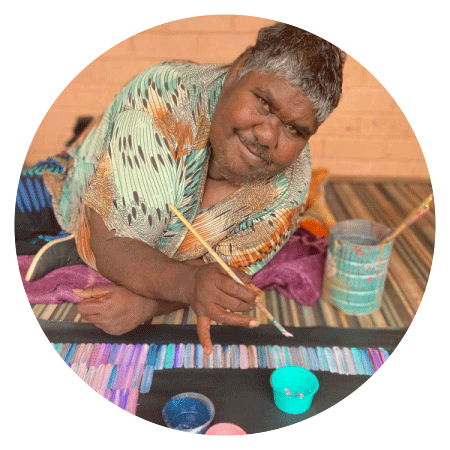
Jeannie: An exhibition of paintings by Utopia artist Jeannie Mills Pwerle
November 08, 2025 2 min read
Jeannie is a collection of beautiful new works by Utopia artist Jeannie Mills Pwerle that represent the Desert Yam.
5 Nov 21 - 16 Jan 22
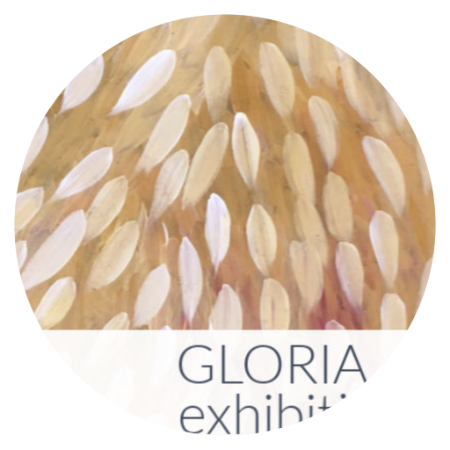
Explore Gloria
November 08, 2025 3 min read
Gloria was a special 2020 exhibition showcasing the beautiful and quintessential Leaves paintings by Gloria Petyarre.
Learn more about this Australian icon.
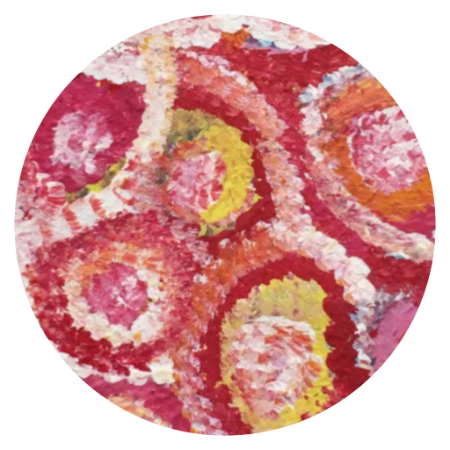
Pencil Yam Seed by Dolly Mills Petyarre
November 08, 2025 1 min read
Dolly Mills Petyarre was one of the most talked about names in Utopia art back in the 90's with group and solo exhibitions across Australia's capital cities.
Now 72, Dolly wants you to know she's not finished yet and has been working on something special after a long hiatus.
Subscribe
Sign up for exhibition previews, new arrivals and more …
Recent Articles
-
Jeannie: An exhibition of paintings by Utopia artist Jeannie Mills Pwerle
November 08, 2025
-
Explore Gloria
November 08, 2025
-
Pencil Yam Seed by Dolly Mills Petyarre
November 08, 2025
-
Bushfire Relief Pledge
November 08, 2025
-
Top Ten Paintings of 2019
November 08, 2025
Subscribe
Sign up for exhibition previews, new arrivals and more …
utopia lane
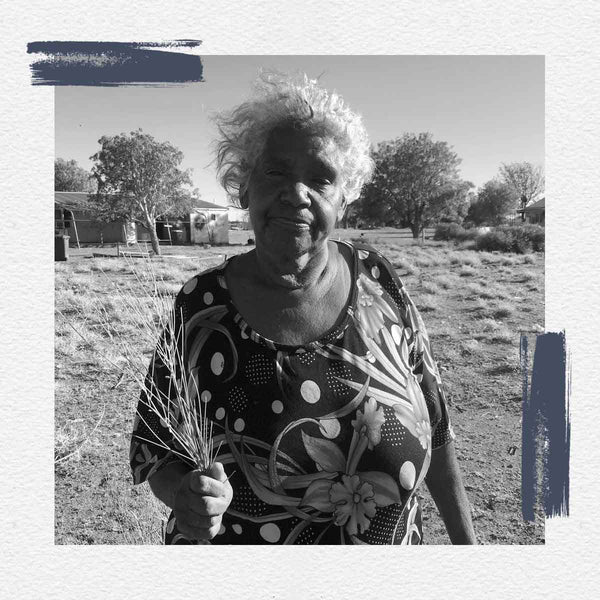
Subscribe to our VIP group for new arrivals, exhibition previews + special features ♥
